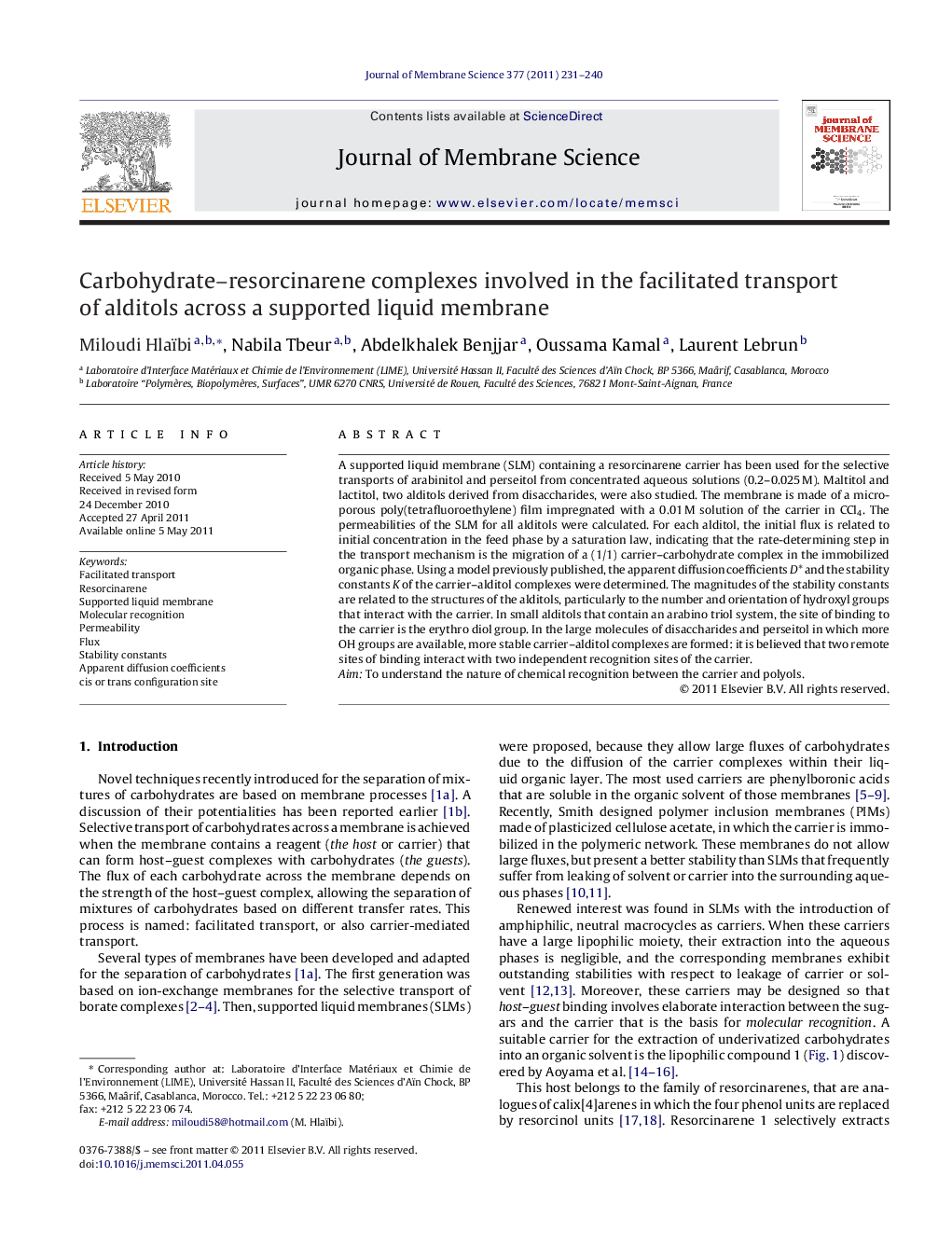| Article ID | Journal | Published Year | Pages | File Type |
|---|---|---|---|---|
| 635512 | Journal of Membrane Science | 2011 | 10 Pages |
A supported liquid membrane (SLM) containing a resorcinarene carrier has been used for the selective transports of arabinitol and perseitol from concentrated aqueous solutions (0.2–0.025 M). Maltitol and lactitol, two alditols derived from disaccharides, were also studied. The membrane is made of a microporous poly(tetrafluoroethylene) film impregnated with a 0.01 M solution of the carrier in CCl4. The permeabilities of the SLM for all alditols were calculated. For each alditol, the initial flux is related to initial concentration in the feed phase by a saturation law, indicating that the rate-determining step in the transport mechanism is the migration of a (1/1) carrier–carbohydrate complex in the immobilized organic phase. Using a model previously published, the apparent diffusion coefficients D* and the stability constants K of the carrier–alditol complexes were determined. The magnitudes of the stability constants are related to the structures of the alditols, particularly to the number and orientation of hydroxyl groups that interact with the carrier. In small alditols that contain an arabino triol system, the site of binding to the carrier is the erythro diol group. In the large molecules of disaccharides and perseitol in which more OH groups are available, more stable carrier–alditol complexes are formed: it is believed that two remote sites of binding interact with two independent recognition sites of the carrier.AimTo understand the nature of chemical recognition between the carrier and polyols.
Graphical abstractFigure optionsDownload full-size imageDownload high-quality image (80 K)Download as PowerPoint slideHighlights► The resorcinarene for facilitated transport of carbohydrates. ► Mechanism based on a saturation law of the carrier by the substrate. ► Possible separation of mixtures by molecular recognition of substrate by the carrier. ► Two mechanisms coexist, a minority by diffusion, and a majority by jumping on sites.
